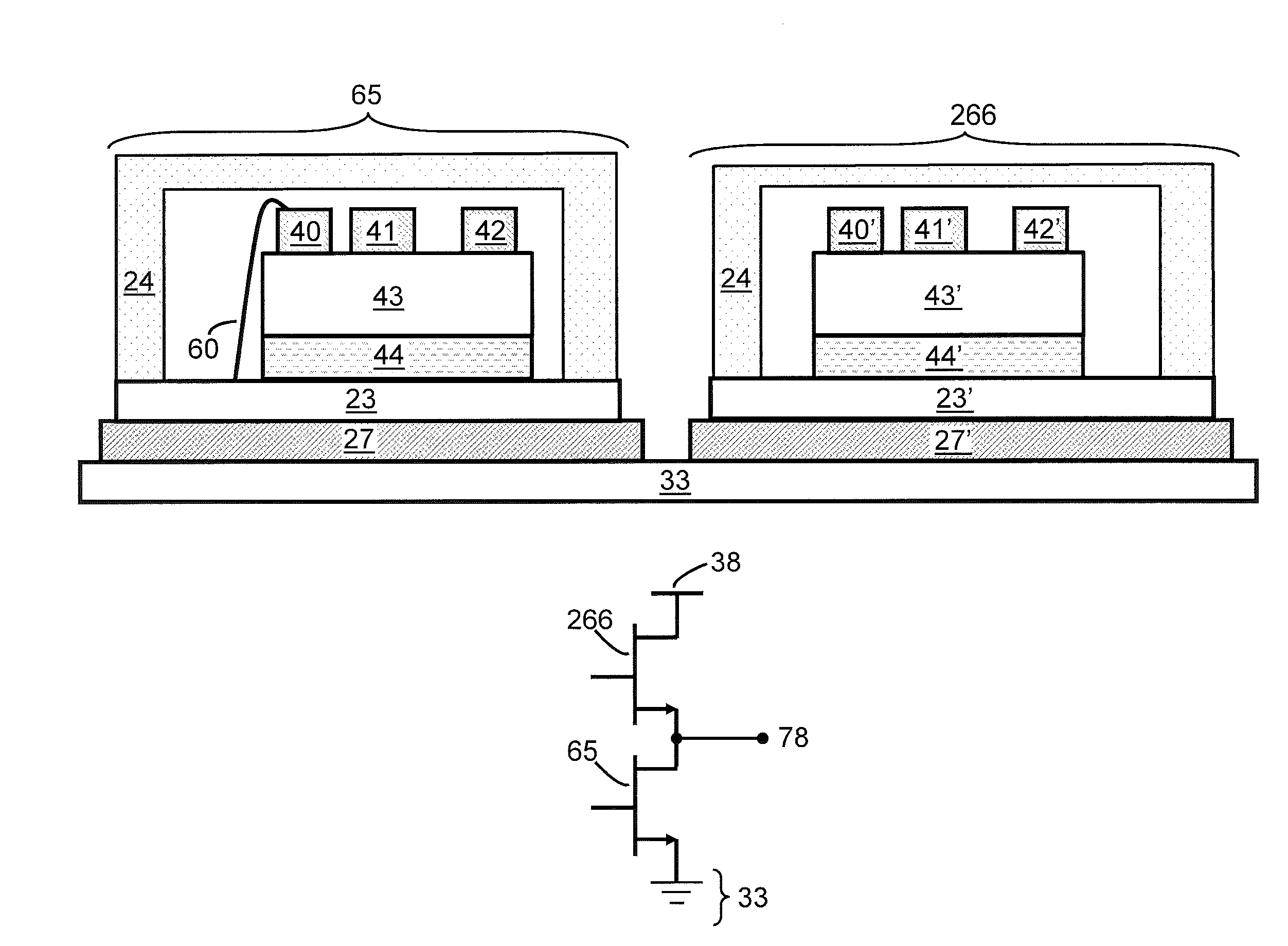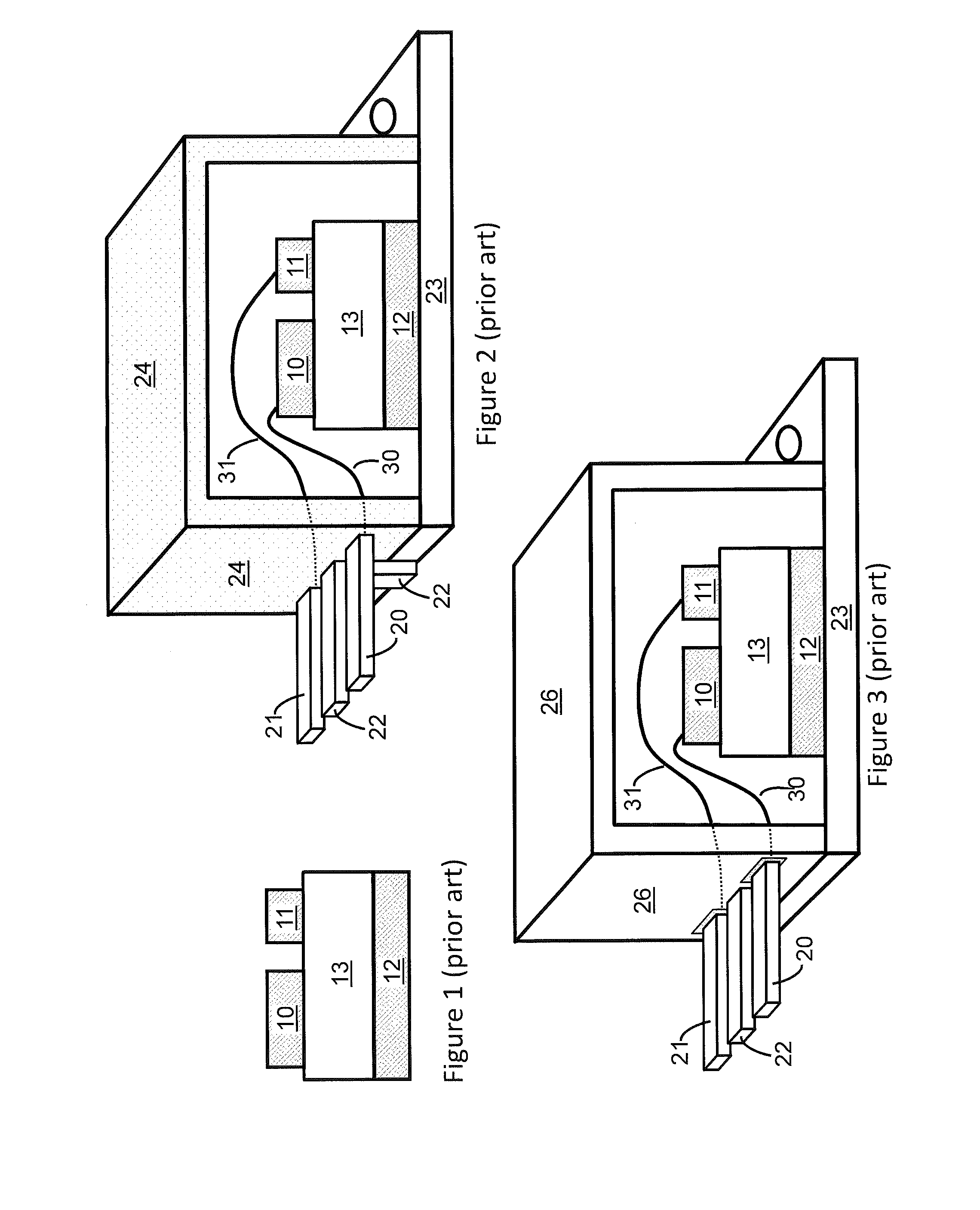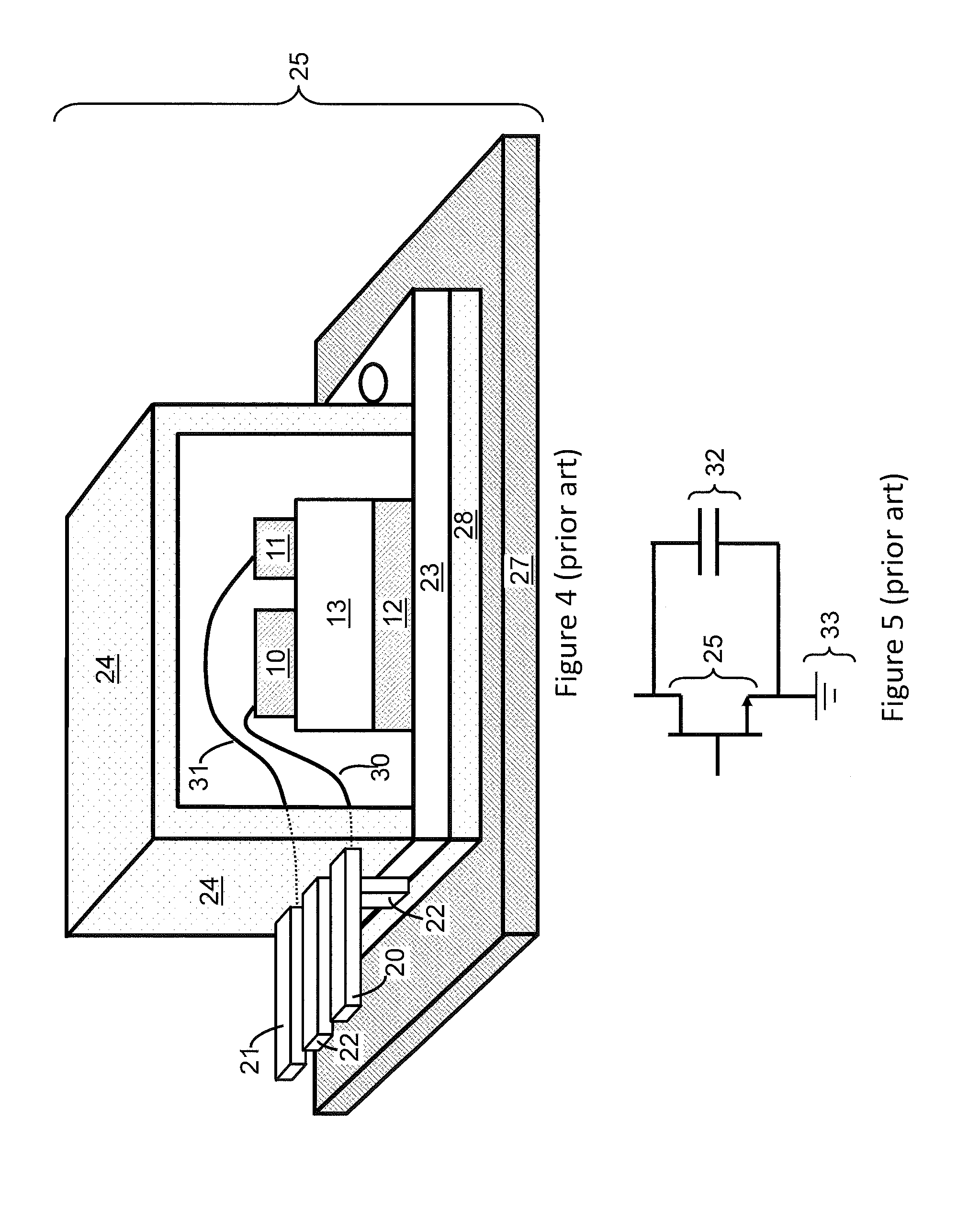Package configurations for low EMI circuits
a low-emi circuit and configuration technology, applied in the direction of power conversion systems, semiconductor/solid-state device details, semiconductor devices, etc., can solve the problems of reducing and affecting the performance of the circui
- Summary
- Abstract
- Description
- Claims
- Application Information
AI Technical Summary
Benefits of technology
Problems solved by technology
Method used
Image
Examples
Embodiment Construction
[0028]FIG. 6 is a schematic illustration of an electronic component, which includes a high voltage switching transistor encased in a package. As used herein, a high voltage switching transistor is a transistor optimized for high voltage switching applications. That is, when the transistor is off, it is capable of blocking high voltages, such as about 300V or higher, about 600V or higher, or about 1200V or higher, and when the transistor is on, it has a sufficiently low on-resistance RON for the application in which it is used, i.e., it experiences sufficiently low conduction loss when a substantial current passes through the device. The high voltage switching transistor includes an insulating or semi-insulating portion 44, a semiconductor body 43, a source electrode 40, a gate electrode 41, and a drain electrode 42. In some implementations, the insulating or semi-insulating portion 44 is an insulating or semi-insulating substrate or carrier wafer, while in other implementations, the...
PUM
 Login to View More
Login to View More Abstract
Description
Claims
Application Information
 Login to View More
Login to View More - R&D
- Intellectual Property
- Life Sciences
- Materials
- Tech Scout
- Unparalleled Data Quality
- Higher Quality Content
- 60% Fewer Hallucinations
Browse by: Latest US Patents, China's latest patents, Technical Efficacy Thesaurus, Application Domain, Technology Topic, Popular Technical Reports.
© 2025 PatSnap. All rights reserved.Legal|Privacy policy|Modern Slavery Act Transparency Statement|Sitemap|About US| Contact US: help@patsnap.com



